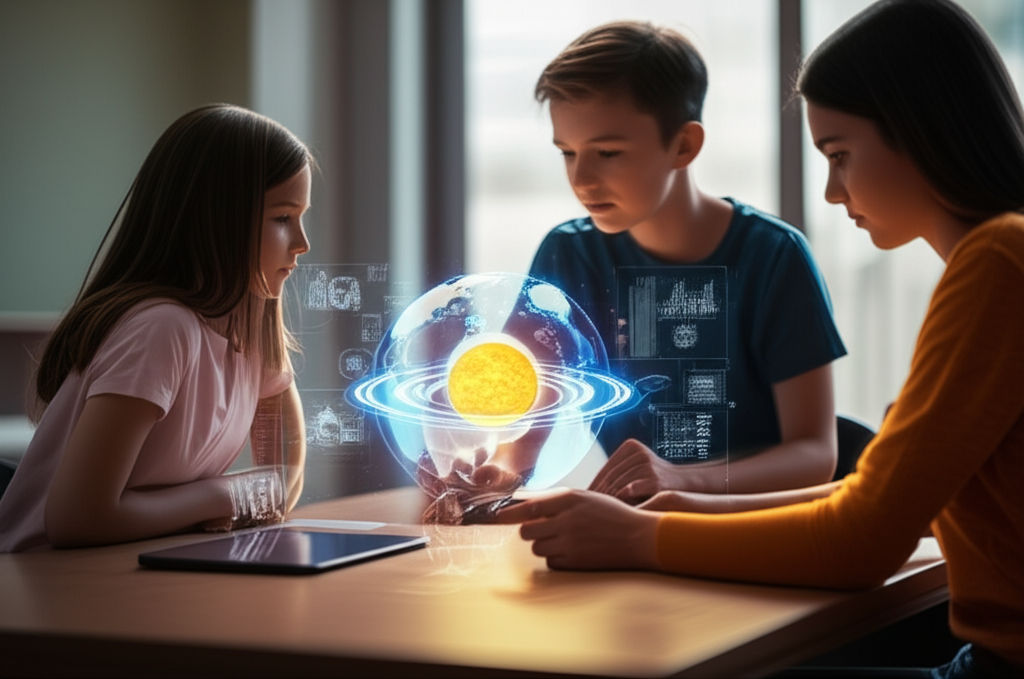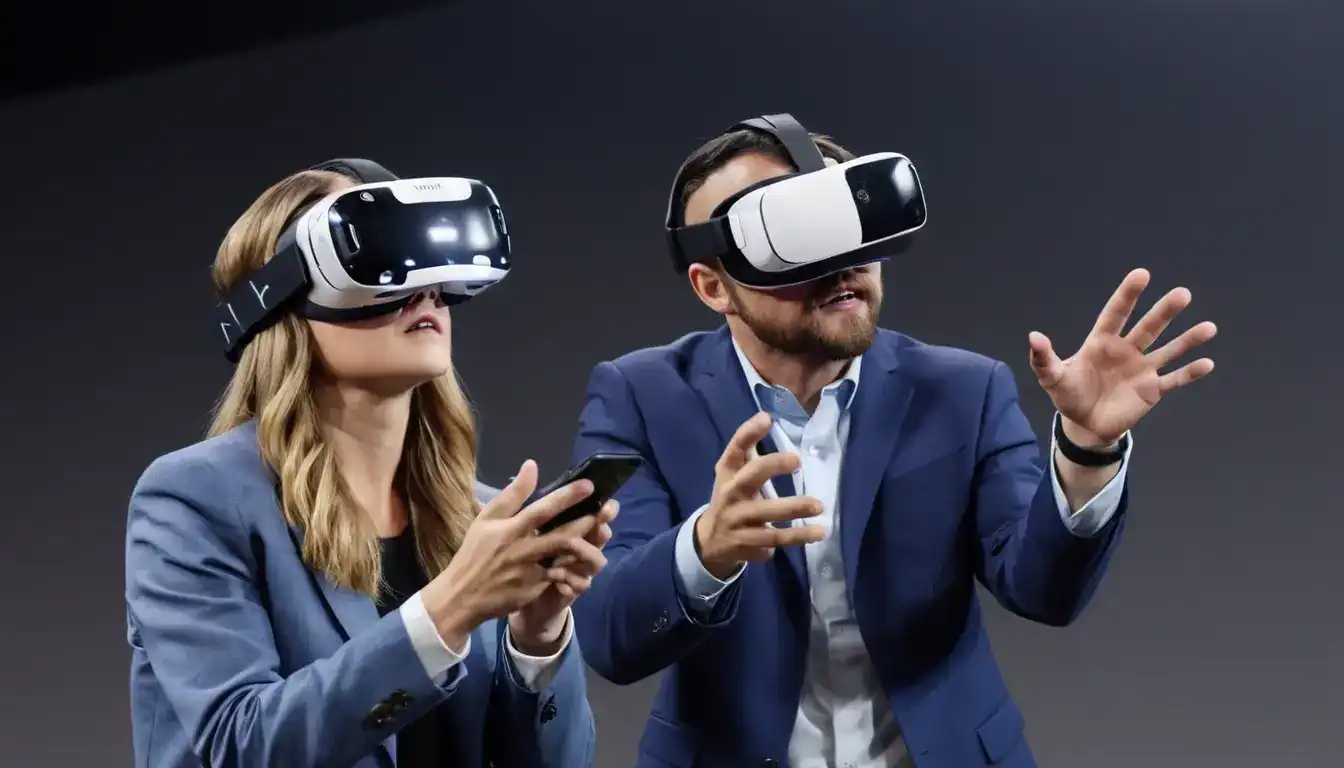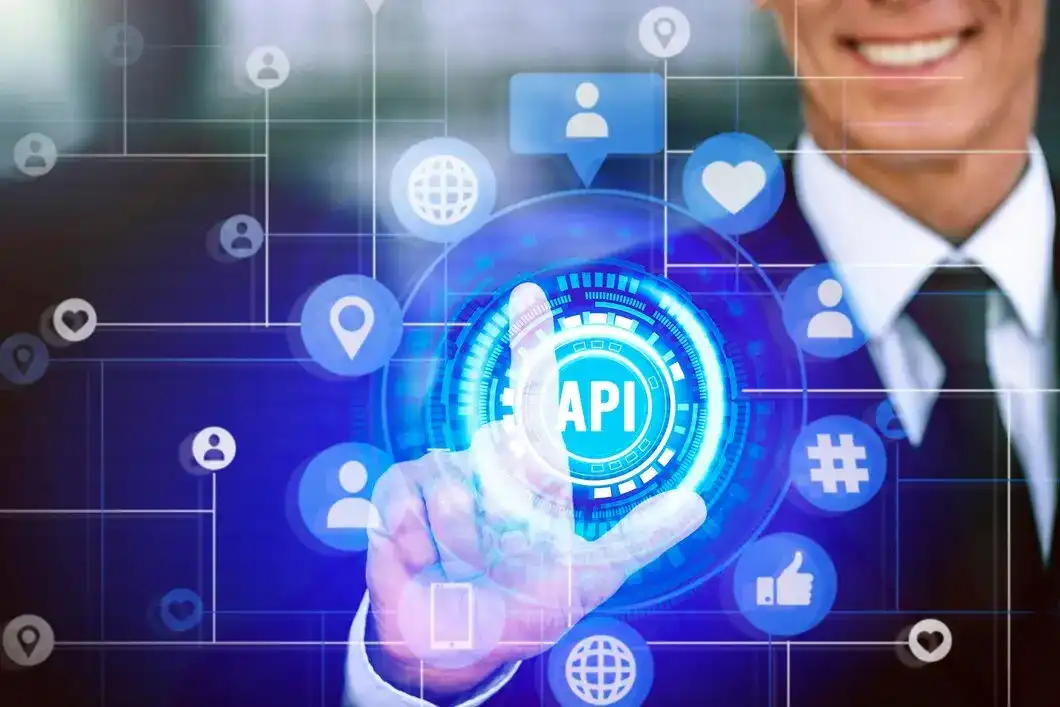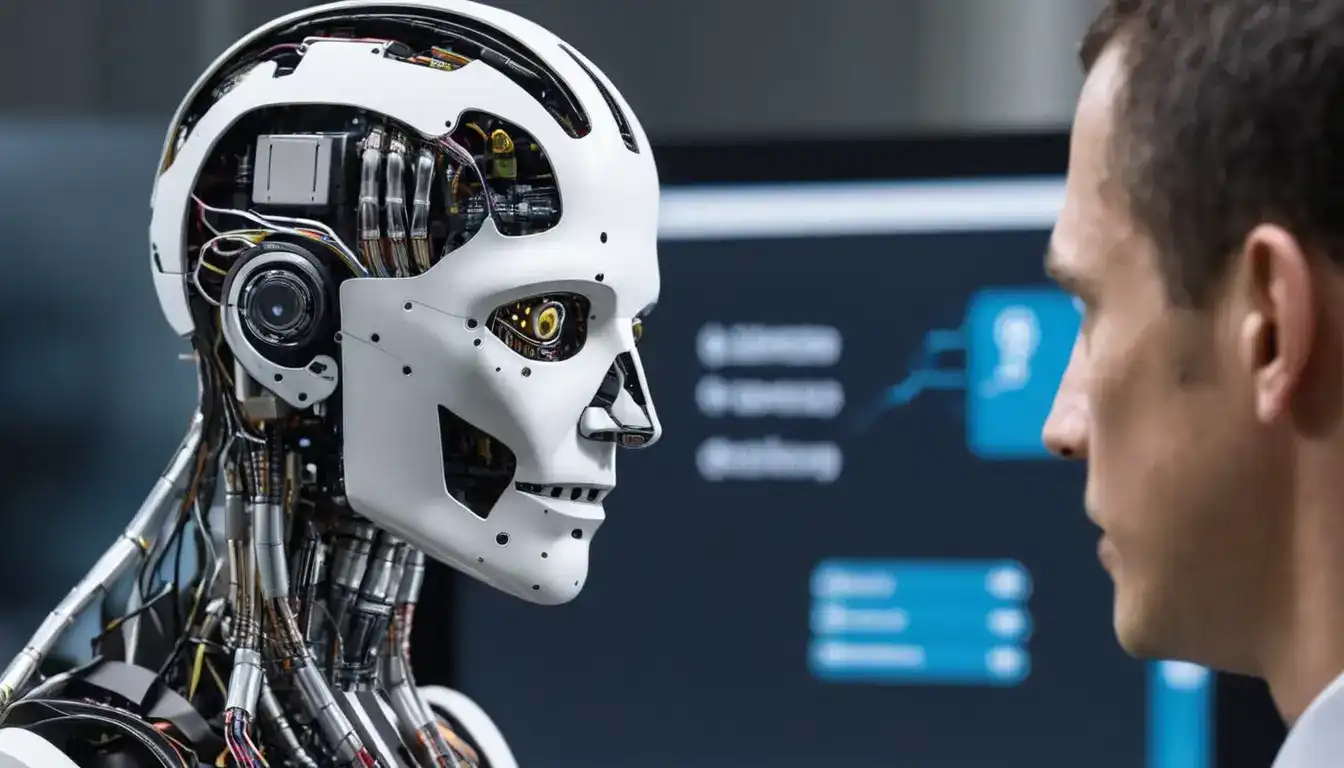AR: Boost Engagement in Future Classrooms
Emily Willis

Photo: AR: Boost Engagement in Future Classrooms
AR: Boosting Engagement in Future Classrooms
Remember those days in school, staring at textbooks, trying to imagine what a dinosaur looked like, or how a complex machine worked? For many of us, learning was often a passive experience, relying heavily on imagination to bridge the gap between words and reality. But what if classrooms could magically bring those textbook images to life, right before your eyes? What if learning became an adventure, an interactive journey where you could explore, create, and collaborate in ways never before possible?
Welcome to the exciting world of Augmented Reality (AR) in education. This transformative technology is rapidly changing how students engage with learning, promising a future where classrooms are not just places of instruction, but vibrant hubs of immersive and interactive discovery. From virtual field trips to hands-on digital experiments, AR is poised to revolutionize student engagement and learning outcomes, making education more dynamic and accessible for everyone.
What Exactly is Augmented Reality (AR) in the Classroom?
Before we dive into the incredible impact of AR, let's clarify what it is. Simply put, Augmented Reality (AR) overlays digital information, like 3D models, videos, or interactive elements, onto your real-world environment. Think of it as adding a "digital layer" to the physical world you see through your smartphone, tablet, or even special glasses. Unlike Virtual Reality (VR), which fully immerses you in a completely digital world, AR keeps you grounded in your actual surroundings while enhancing them with digital content.
Imagine pointing your tablet at a textbook image of the human heart, and suddenly, a vibrant, beating 3D model of the heart appears on your screen, seemingly floating above the page. You can rotate it, zoom in, and even "dissect" it to see its different chambers and functions. That's AR in action! It blends the physical environment with computer-generated sensory inputs such as audio, visuals, and haptic feedback to create an interactive and immersive learning environment.
The Engagement Gap: Why Traditional Methods Can Fall Short
In our increasingly digital world, traditional teaching methods, often reliant on static textbooks and lectures, can struggle to capture the attention of today's tech-savvy students. Students are growing up in a world characterized by digital interactivity, and their educational experiences should reflect this reality. This often leads to an "engagement gap," where students might feel disconnected from the material, struggling to grasp abstract concepts or see the real-world relevance of what they're learning. Passive learning, where students simply receive information, often falls short in fostering deep understanding and long-term retention. This highlights a pressing need for innovative solutions to keep students motivated and actively participating in their educational journey.
AR: Unlocking Unprecedented Student Engagement
Augmented Reality is emerging as a powerful solution to bridge this engagement gap. By making learning more interactive, immersive, and hands-on, AR transforms the classroom into an exciting space for discovery. Studies have shown that AR can significantly improve student test scores, especially in subjects requiring high spatial reasoning and interactive learning. The global market for AR in education is expected to reach a staggering US$ 55.84 billion by 2033, reflecting a robust Compound Annual Growth Rate (CAGR) of 32% from 2023. By 2024, it's projected that over 40% of K-12 schools in the US will incorporate AR/VR technologies, a significant jump from less than 20% in 2022. Moreover, an overwhelming 93% of teachers believe that VR (and by extension, AR) would be beneficial in classroom teaching.
Let's explore some key ways AR is boosting student engagement:
Immersive & Interactive Learning: Bringing Subjects to Life
AR has an incredible ability to transform abstract concepts into tangible, interactive experiences. Imagine:
- Exploring Human Anatomy: Instead of just looking at diagrams, biology students can use an AR app like "AR Anatomía 4D+" to view and manipulate detailed 3D anatomical models in real-time, exploring organs and their functions from different angles and layers. They can even "dissect" a hyperrealistic virtual frog without needing a real one.
- Witnessing History: History lessons can become vibrant journeys into the past. Students can virtually walk through ancient Rome, explore historical sites, or witness significant events as if they were there.
- Understanding Complex Science: Chemistry can come alive with apps like "Element 4D," allowing students to discover atomic weights, chemical elements, and even see reactions between two chemicals by simply putting two paper cubes together. Physics students can interact with magnetic fields by moving their hands in real-time.
This improved visualization helps students understand and internalize even the toughest topics, fostering deeper comprehension and long-lasting retention.
Gamification for Enhanced Motivation: Learning as Play
AR seamlessly integrates gamification elements into learning, transforming educational tasks into engaging games and challenges. This approach can significantly boost student motivation and make the learning process more enjoyable.
- Interactive Quizzes and Challenges: AR apps can incorporate quizzes and puzzles that require students to interact with virtual objects or solve problems in a gamified environment.
- Virtual Scavenger Hunts: Teachers can create virtual scavenger hunts where students use AR-enabled devices to find hidden virtual objects or solve puzzles related to the curriculum.
- Creative Content Creation: Tools like CoSpaces Edu and Assemblr empower students to not only explore AR content but also create their own immersive experiences, adding audio, coding characters, and uploading their own 360-degree photos. This fosters creativity and problem-solving skills.
Personalized Learning Paths: Tailoring Education to Individual Needs
Every student learns differently. AR allows for differentiated instruction, accommodating diverse learning styles and preferences.
- Adaptive AR Experiences: AR can adapt educational content to individual needs, creating unique and self-paced experiences for each student. This ensures a more inclusive and effective educational environment.
- Self-Paced Exploration: Students can explore complex concepts at their own pace, revisiting challenging areas or delving deeper into topics that pique their interest. This fosters learner independence.
Virtual Field Trips & Global Exploration: Beyond the Classroom Walls
One of the most exciting applications of AR is its ability to break down geographical barriers, allowing students to embark on virtual field trips without leaving the classroom.
- Exploring Distant Lands: Students can virtually visit historical sites, museums, or even explore distant planets or ocean depths. Google Expeditions, for example, offers over 100 AR expeditions, including the history of technology and the moon landing.
- Breaking Barriers: This is particularly beneficial for schools with limited budgets for physical excursions, providing access to experiences that would otherwise be impossible.
Hands-on, Experiential Learning: Learning by Doing
AR facilitates experiential learning by allowing students to interact with virtual objects and simulations in a safe and controlled environment.
- Virtual Experiments: Students can conduct virtual science experiments, dissect virtual organisms, or explore complex scientific concepts, gaining practical skills without the need for expensive or hazardous physical materials.
- Skill Development: In vocational training, AR can allow students to practice techniques, such as welding, in a digitally-overlaid environment, providing real-time feedback and reducing material waste and safety risks.
Fostering Collaboration & Communication: Working Together in a New Dimension
AR can promote collaborative learning, allowing students to work together on shared virtual projects and problem-solving tasks.
- Shared AR Spaces: With advancements like ARKit 2, multiple students and teachers can explore an AR app simultaneously, collaborating on projects or engaging in shared learning experiences.
- Global Collaboration: AR can even enable students to interact with peers worldwide in a shared virtual environment, fostering cross-cultural understanding and teamwork.
Practical Applications of AR in Today's & Future Classrooms
The applications of AR in education are diverse and continuously expanding, offering a fresh perspective across various subjects:
- Science & STEM Education: AR is a natural fit for STEM, allowing students to visualize complex concepts. They can virtually dissect organisms, explore molecular structures, conduct virtual experiments, or even program robots by "seeing" through their sensors. For instance, apps like Merge Cube allow students to explore the water cycle, view fossils, and examine simple machines by holding a virtual object in their hands.
- History & Social Studies: Beyond virtual field trips, AR can bring historical artifacts to life, allowing students to examine them in 3D or overlay information about their origins and significance.
- Art & Design: Students can create and manipulate 3D sculptures, explore art history by viewing augmented artworks, or even bring their own drawings into interactive AR settings for storytelling.
- Language Learning: AR provides contextual and interactive experiences for language acquisition. Students can scan objects or texts to receive instant translations, pronunciation guides, or engage in immersive conversational practice.
- Mathematics & Geometry: AR simplifies abstract mathematical concepts by allowing students to walk around and manipulate 3D geometric shapes and equations in real-time, improving their spatial skills. A study showed a 39.7% improvement in test scores for geometry students using AR tools compared to a 17.2% improvement in the control group.
- **Special
Latest ✨
View AllThe digital age has brought both potential and challenges to classrooms. Challenges include the digital divide, lack of teacher training, screen time overload, data security, and content control. Solutions include bridging the gap in access to technology, providing teacher training, finding a balance between screen time and traditional learning, implementing cybersecurity measures, and filtering and monitoring content.
Emily Willis
Discover the blended teacher: how educators are transforming learning by combining traditional & online methods for personalized, engaging education.
Emily Willis
Empower students with agency! Give them voice, choice, & ownership in learning for a brighter future. Discover why it's crucial & how to cultivate it.
Emily Willis
Unlock business resilience! Prepare for, adapt to, and overcome challenges. Transform uncertainty into opportunity and build a stronger, future-proof business.
Emily Willis
Business
View All
June 8, 2025
Gain Competitive Edge in Any MarketMaster competitive advantage! Discover actionable strategies for business growth, market leadership, and differentiation in any market.
Emily Willis

August 4, 2024
Tips to Increase Work Productivity in BusinessIncreasing work productivity in business is achievable with the right strategies and mindset. By setting clear goals, prioritizing tasks, eliminating distractions, taking breaks, delegating responsibilities, using technology, maintaining a healthy work-life balance, continuously improving skills, fostering a positive work environment, and monitoring progress, you can boost productivity and achieve better results.
Emily Willis

August 4, 2024
The Importance of Financial Management for Small and Medium Enterprises (SMEs)emphasizes the importance of effective financial management for small and medium enterprises (SMEs) in a competitive business environment.
Emily Willis
Economy
View AllBoost your business profits! Discover actionable strategies to maximize revenue and efficiently manage costs for sustainable growth.
Read MoreDemystifying private equity: Understand its surging influence, how it reshapes industries & economies, and its impact on modern capitalism.
Read Moreimpact of inflation on households and businesses, outlining the causes and consequences of rising prices. It provides strategies for both households and businesses to cope with inflation, such as budgeting, seeking deals, and negotiating with suppliers. The importance of collaboration and communication between governments, businesses, and consumers is emphasized, along with the need for long-term investments in infrastructure, skills development, and sustainable practices.
Read MoreEntertainment
View All
August 5, 2024
VR and AR Transform EntertainmentVirtual reality (VR) and augmented reality (AR) are transforming the entertainment industry by offering immersive experiences that blur the lines between the real and virtual worlds. VR completely transports users into computer-generated environments, while AR overlays digital elements onto the real world.
Emily Willis

August 5, 2024
Music's Evolving Landscape: Technology, Social Media, and Global TrendsThe music industry has undergone significant changes due to technological advancements, social media, and a growing global audience. The shift from analog to digital formats, the rise of streaming services, and the impact of social media on artist-fan relationships are explored.
Emily Willis

August 4, 2024
Virtual Music Concerts: The Future of Live Performance?The music industry has seen significant changes in recent years, with virtual music concerts becoming a popular trend, especially due to the impact of the COVID-19 pandemic. Technological advancements have made virtual concerts more accessible and cost-effective, while also reducing the environmental impact of live events. However, challenges such as technical issues and the lack of physical presence remain. The future of virtual concerts may involve hybrid models that combine virtual and physical experiences, as well as continued technological innovation to enhance the quality of virtual performances. Building a sense of community and engagement will also be crucial for the success of virtual concerts moving forward.
Emily Willis
Health
View AllHeart disease is a leading cause of death globally, but early detection and prevention strategies can reduce its impact. This article discusses the importance of early detection, common risk factors, preventive measures, and lifestyle changes for heart health. Understanding heart disease, recognizing symptoms, and undergoing regular screenings are crucial. Common risk factors include high blood pressure, high cholesterol, diabetes, smoking, obesity, physical inactivity, and family history. Symptoms of heart disease include chest pain, shortness of breath, fatigue, irregular heartbeat, and swelling. Diagnostic tests and screenings include blood pressure measurement, cholesterol screening, blood glucose test, ECG, stress test, and imaging tests. Preventive measures include adopting a heart-healthy diet, regular physical activity, quitting smoking, managing stress, maintaining a healthy weight, and limiting alcohol consumption. Medications and treatment options may be necessary for individuals at high risk or diagnosed with heart disease.
Emily Willis
cultivating healthy lifestyle habits to improve overall well-being. It focuses on three pillars of well-being: nutrition, exercise, and sleep. It provides tips on how to incorporate these practices into daily routines, such as eating a variety of foods, finding enjoyable forms of exercise, and establishing a consistent sleep schedule.
Emily Willis
Nutrition is crucial for maintaining overall body health, impacting energy levels, disease prevention, and overall well-being. A healthy diet includes fruits, vegetables, whole grains, proteins, healthy fats, and hydration. Proper nutrition positively affects energy levels, immune function, heart health, weight management, and mental health. Practical tips for improving nutrition include planning balanced meals, reading food labels, cooking at home, limiting processed foods, and staying hydrated. By prioritizing nutrition and making informed choices, individuals can enhance their health and well-being.
Emily Willis
Trending 🔥
View All
1
2
3
4
5
7
8
9
10
Sports
View AllAugust 4, 2024
The Importance of Mental Training and Psychological Strategies in Helping Athletes Reach Their Peak Performance on the Field
Read MoreAugust 5, 2024
Sportsmanship in the Spotlight: Cultivating Respect, Integrity, and Ethical Behavior
Read MoreTechnology
View All
August 5, 2024
Top Skills Every Junior Software Developer Should Master in 2024
Meta Description: Discover the top skills junior software developers need to master in 2024 to excel in their careers. From coding languages to soft skills, this blog reveals the secrets to staying ahead in the dynamic world of software development.

August 5, 2024
Top 10 Steam Games of 2024
Discover the 10 best Steam games of 2024 and embark on an unforgettable adventure. From breathtaking open-world epics to thrilling FPS battles, these must-play games will keep you entertained for hours. Get ready to dive into the exciting world of Steam gaming and discover your next favorite game!

August 5, 2024
What is Blockchain and How does it Work?
Blockchain technology is a decentralized digital ledger that records transactions securely and transparently across multiple computers. Key concepts include decentralization, cryptographic security, and consensus mechanisms. Transactions are verified, grouped into blocks, and added to the blockchain through a consensus process.

August 4, 2024
Impact of Artificial Intelligence on Business Operations: Efficiency and Innovation
Artificial Intelligence (AI) is transforming modern business operations by increasing efficiency, driving innovation, and driving strategic decision-making. AI automates routine tasks, improves data analysis, and enables personalized customer experiences.





















